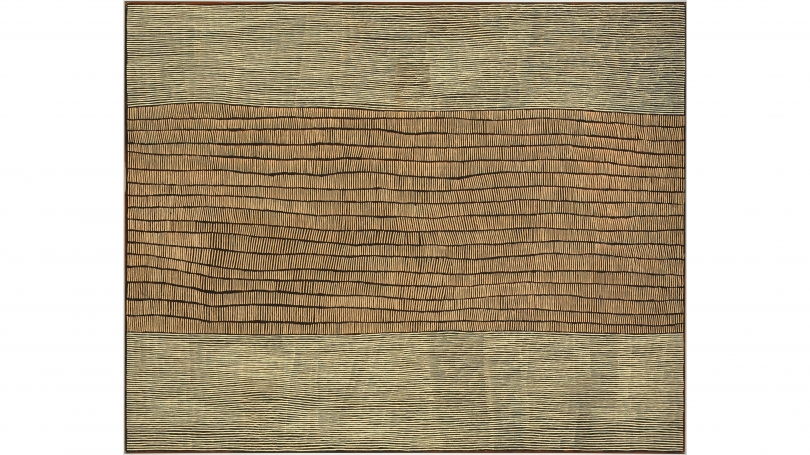Honoring Will Owen through an Installation of Contemporary Art
The winter 2016 exhibition Contemporary Abstraction includes six works from the Will Owen and Harvey Wagner Collection of Indigenous Australian Art. Harvey and Will gifted these works—and over 600 others—to the museum beginning in 2009. Will Owen died unexpectedly on December 2, 2015, and his friends at the Hood Museum of Art have dedicated this installation of contemporary abstract works to his memory.
Will Owen and Harvey Wagner became interested in Indigenous Australian art when they saw the 1988 exhibition Dreamings: Art of Aboriginal Australia at the Asia Society in New York City. Repeated visits to Australia with travel to art-producing communities throughout the country deepened their interest in Indigenous Australian art, and in the artists’ cultures. Harvey and Will collected works from across the continent, with the idea that their collection would represent the diversity of artistic practice by these contemporary artists. In 2005, Will began publishing a weekly blog, Aboriginal Art & Culture: an American eye. In 2011, after a thirty-five-year career at the University of North Carolina Chapel Hill University Library, he was named the Associate University Librarian for Systems and Technical Services. In an obituary released by the library, University Librarian and Associate Provost for University Libraries Sarah Michalak stated that the library and the field have lost “one of the greats of librarianship and a leader whose accomplishments embody the best of the profession.”
In his catalogue essay for the Hood’s 2012 exhibition Crossing Cultures: The Owen and Wagner Collection of Contemporary Aboriginal Australian Art at the Hood Museum of Art, Will describes his evolving relationship to the art that had first caught his eye in the 1980s:
What had begun for us as a purely aesthetic adventure thus became an odyssey of cultural immersion. We had at first wanted to understand Aboriginal culture in order to better parse and respond to the iconography of the paintings we were collecting. But we soon came to feel that we were discovering a new way of looking at the world itself as well as a new world of art. Paintings and sculptures and photographs were providing us with an education in Aboriginal ontologies—in history seen from the perspective of the colonized. We caught glimpses of a vastly different social order. And finally we came to understand that this education in values was one of the prime movers for the artists as well: their art was a means of teaching outsiders a few fundamental truths about the ways in which they lived their lives and defined the world.
Will’s dedication to the indigenous art of Australia was a two-and-a-half decade–long passion. It was his wish that the students of Dartmouth College would become engaged in the art of the many indigenous societies of that continent through encounters with the Hood’s Owen and Wagner Collection.
*A related story appeared in the spring/summer 2016 issue of the Hood Quarterly.




